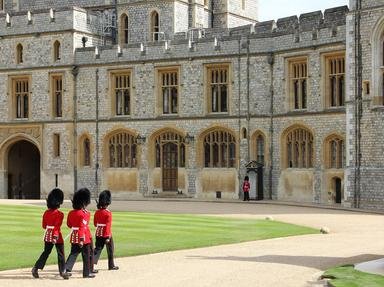Quiz Answer Key and Fun Facts
1. The youngest person to ever succeed to the throne of England, this monarch became king at the age of nine months. After losing the throne during the War of the Roses at Towton to Edward of York, he was able to regain the throne with the help of allies for approximately six more months. Who was this long-reigning king?
2. The heir of Robert the Bruce of Scotland, this king, who ruled for over forty-one years, was held prisoner in England for eleven of them. What was his name?
3. The youngest daughter of Henry VIII, this queen, commonly called "Gloriana", was the last monarch of the Tudor Dynasty. What was her name?
4. Known as "the Great", this leader of Wales was married to King John of England's daughter, Joan. Who ruled in Wales for approximately forty-five years?
5. Known as "the Lion", this king of Scotland flew a standard with a red lion rampant on a gold background. He inherited the title "Earl of Northumbria", but lost it to King Henry II of England. What was his name?
6. This king of England was crowned at the age of fourteen after his mother, Isabella, and her friend, Roger Mortimer, overthrew his father. His claim to the French throne led to the beginning of the Hundred Years' War. What was this king's name?
7. This king ruled Scotland before establishing the Stuart Dynasty in England as James I. What was his title in Scotland?
8. This king's reign was marked by many conflicts, including the American Revolution and the Napoleonic Wars. Due to reccurring health problems, his final nine years as king are known as the "Regency", as his oldest son, the Prince of Wales, ruled as Prince Regent. Who was this king?
9. Which long-reigning British monarch became "heir presumptive" after the death of her grandfather and unexpected abdication of her uncle?
10. Which long-reigning monarch eventually became the first and only Empress (regnant) of India? She ruled for sixty-three years and seven months.
Source: Author
ponycargirl
This quiz was reviewed by FunTrivia editor
bloomsby before going online.
Any errors found in FunTrivia content are routinely corrected through our feedback system.


